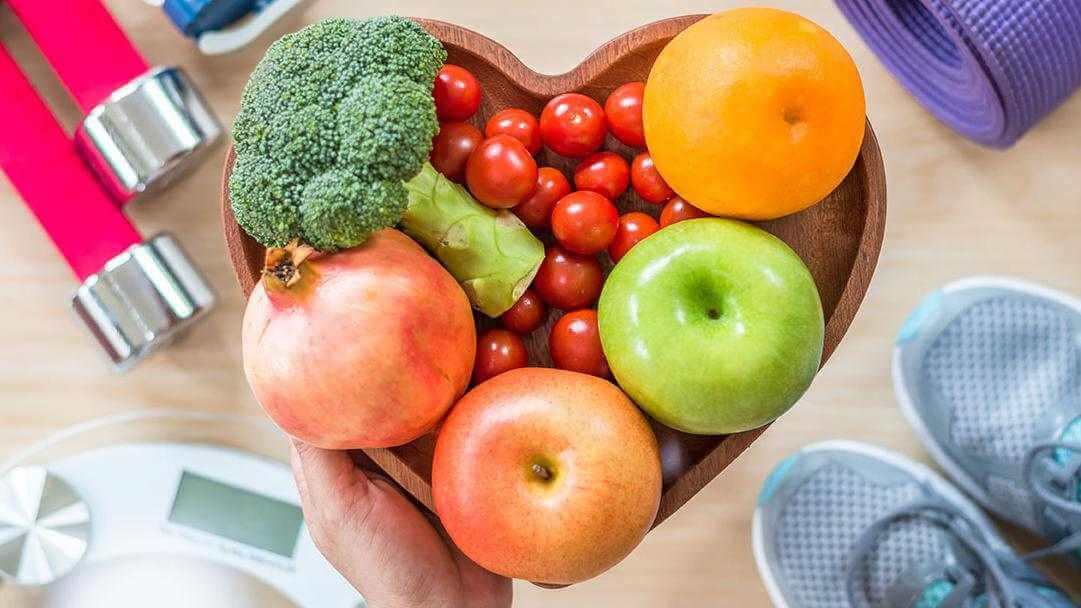Live Healthier: How to Create a Healthy Lifestyle

These days it’s hard to know what a healthy lifestyle even is. There are so many people telling us so many different things. Should we be vegetarian and eat only plants? Should be carnivorous and eat only meat? Should we avoid carbs, or fat, or protein? If we avoid all those, then what do we eat to live healthier?!
As someone who tries very hard to live a healthier life, I have gotten very frustrated with the messages we’ve been told about health. So I decided to go to the research and see if I could find out what the research says about living healthier.
Here’s what I learned:
1. Eat more fruits and veggies
Probably the most important thing you can do to live healthier is to eat more fruits and veggies. One study showed that the people who eat the least fruits and veggies were twice as likely as frequent veggie and fruit eaters to get many types of cancer [1]. So fill half your plate with veggies at each meal.
The minimum recommendation is to eat at least 2 servings of fruit and 3 servings of vegetables per day, but it seems that the broader range of veggies you eat the better [2]. So strive to eat a rainbow of veggies and fruits to ensure you’re getting the full range of nutrients.
2. Eat red veggies and fruits
To get the variety of nutrients you need for a healthier life, be sure to eat foods with a variety of nutrients and phytochemicals. To start, eat red foods. These foods are high in lycopene. Lycopene-rich foods have been linked to lower prostate cancer risk [3].
Here’s what to eat to live healthier:
- Tomatoes
- Red bell peppers
- Persimmons
- Red cabbage
- Pink grapefruit
- Watermelon
3. Eat orange veggies and fruits
Carotenes are mostly found in orange foods. Increased consumption of foods with carotenes has been linked to lower risk of breast cancer [3].
Here’s what to eat to live healthier:
- Carrots
- Sweet potatoes
- Cantaloupe
- Peaches
- Apricots
- Orange peppers
4. Eat yellow fruits and veggies
Yellow foods have lutein in them. But if we remember our color wheel, yellow plus blue makes green, so there is a lot of lutein in green foods too. Lutein is an antioxidant, free radical scavenger that may also help protect the body against inflammation [2].
Here’s what to eat to live healthier:
- Yellow peppers
- Yellow squash
- Leafy green vegetables
- Egg yolk
- Kiwi
- Green grapes
- Zucchini
- Corn
5. Eat cruciferous veggies
A healthier life includes eating raw cruciferous veggies like coleslaw or broccoli sprouts. Broccoli sprouts in particular are high in sulforaphane, which may be especially beneficial [2].
Here’s what to eat to live healthier:
- Broccoli (or broccoli sprouts)
- Cauliflower
- Kale
- Brussels sprouts
- Cabbage
6. Eat fish
Fish has something called astaxanthin in it. It is anti-inflammatory and can scavenge free radicals [2].
Here’s what to eat to live healthier:
- Salmon
- Trout
- Shrimp
- Lobster
- Crab
7. Eat allium vegetables
Allium vegetables (garlic, onions) are another health powerhouse. The sulfur in these foods can potentially lower gastrointestinal cancer risk [3].
Here’s what to eat to live healthier:
- Onions
- Garlic
- Green onions
- Scallions
8. Get your vitamins
In addition to eating lots of veggies and fruits, it may be healthful to eat foods high in compounds such as vitamin E, vitamin C, and vitamin D. Many of us can be deficient in these nutrients and so vitamins can get us back up where we need to be.
9. Get your probiotics
Probiotics such as L. acidophilus, Bifidobacterium longum, and L. casei have been linked to lower cancer risk [4].
Here’s some good probiotics to live healthier:
- Saccharomyces boulardii (this is the one I use)
- Soil based probiotic
- Bifidobacterium
Probiotics are even more potent when they’re fresh. We can make fresh probiotics by lacto fermenting vegetables, fruits, or dairy products.
Here’s everything you need to lacto ferment at home:
10. Eat less food
Intermittent fasting has become popular recently. And perhaps this is for good reason. Eating fewer calories may be one of the best things we can do for our health [5]. By doing periodic fasts where we let our digestion rest and don’t consume calories, we can likely improve our health.
11. Avoid xenoestrogens and plastics
Xenoestrogens include chemicals like polycyclic aromatic hydrocarbons (PAH), pesticides, some drugs, mycotoxins, bisphenol A (BPA; a plastics additive), and many others and they can cause significant damage to our health [6]. Check out our article on healthy products to get these chemicals out of your kitchen, closet, and home.
12. Exercise
You probably already know that exercise is good for your physical health. But exercise is also a good way to manage stress and reduce anxiety. Exercise increases parasympathetic activity (and feelings of calmness) when we exercise regularly, which helps us feel more relaxed in the longer-term [7].
13. Work on your emotional health
Living a healthy life is not just about diet and exercise, it’s about changing the way we think and act in ways that improve our emotional health. Here are a few science-based activities to help you boost various aspects of emotional health:
…


















